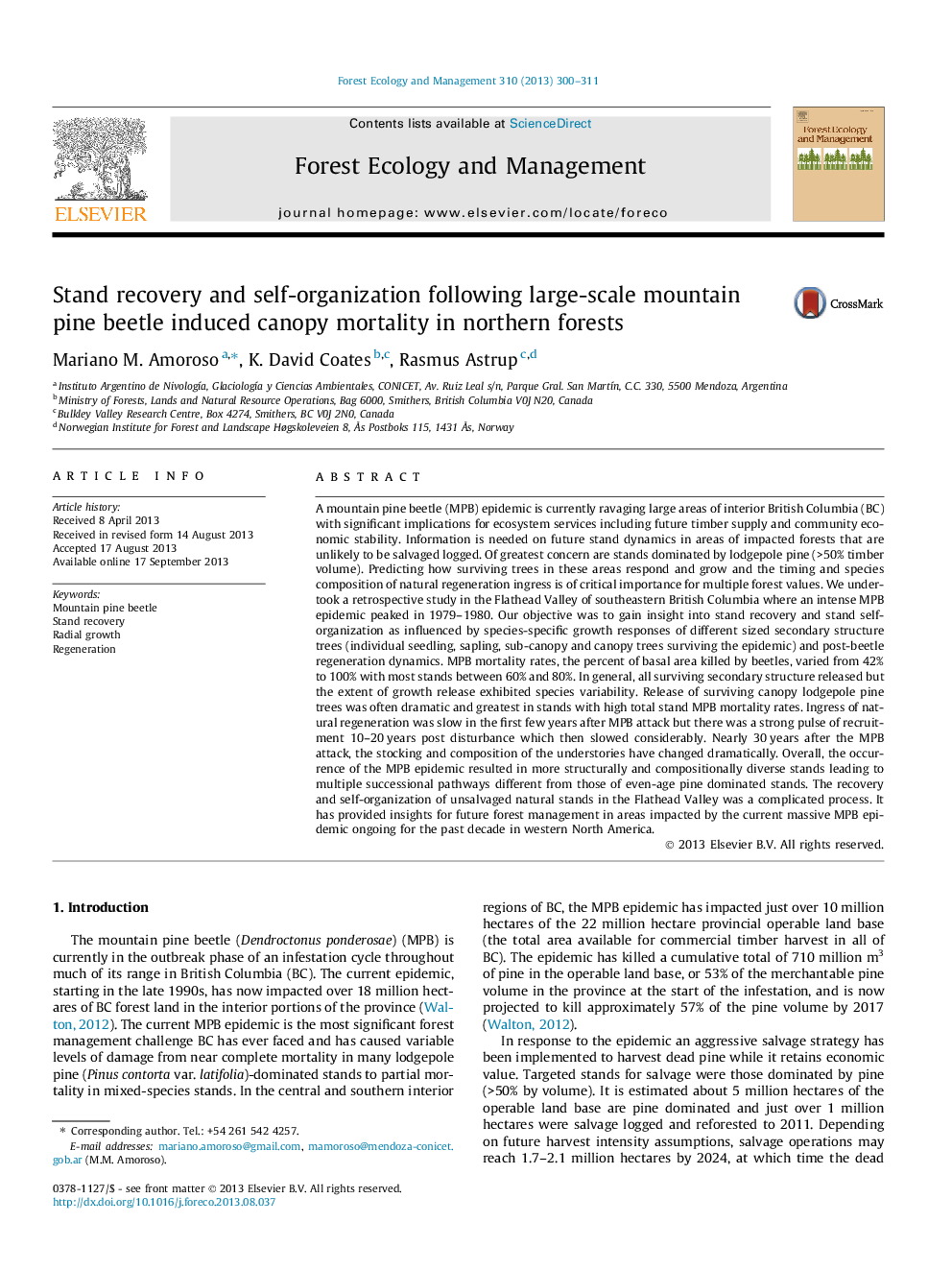| کد مقاله | کد نشریه | سال انتشار | مقاله انگلیسی | نسخه تمام متن |
|---|---|---|---|---|
| 6543697 | 159212 | 2013 | 12 صفحه PDF | دانلود رایگان |
عنوان انگلیسی مقاله ISI
Stand recovery and self-organization following large-scale mountain pine beetle induced canopy mortality in northern forests
ترجمه فارسی عنوان
ریشه کنی و سازماندهی خود به دنبال سوسک های کاج کوهی در مقیاس بزرگ، موجب مرگ و میر کانوپی در جنگل های شمال گردید
دانلود مقاله + سفارش ترجمه
دانلود مقاله ISI انگلیسی
رایگان برای ایرانیان
کلمات کلیدی
سوسک سوسک کوهستان، بازیابی پایه، رشد شعاعی، بازسازی،
موضوعات مرتبط
علوم زیستی و بیوفناوری
علوم کشاورزی و بیولوژیک
بوم شناسی، تکامل، رفتار و سامانه شناسی
چکیده انگلیسی
A mountain pine beetle (MPB) epidemic is currently ravaging large areas of interior British Columbia (BC) with significant implications for ecosystem services including future timber supply and community economic stability. Information is needed on future stand dynamics in areas of impacted forests that are unlikely to be salvaged logged. Of greatest concern are stands dominated by lodgepole pine (>50% timber volume). Predicting how surviving trees in these areas respond and grow and the timing and species composition of natural regeneration ingress is of critical importance for multiple forest values. We undertook a retrospective study in the Flathead Valley of southeastern British Columbia where an intense MPB epidemic peaked in 1979-1980. Our objective was to gain insight into stand recovery and stand self-organization as influenced by species-specific growth responses of different sized secondary structure trees (individual seedling, sapling, sub-canopy and canopy trees surviving the epidemic) and post-beetle regeneration dynamics. MPB mortality rates, the percent of basal area killed by beetles, varied from 42% to 100% with most stands between 60% and 80%. In general, all surviving secondary structure released but the extent of growth release exhibited species variability. Release of surviving canopy lodgepole pine trees was often dramatic and greatest in stands with high total stand MPB mortality rates. Ingress of natural regeneration was slow in the first few years after MPB attack but there was a strong pulse of recruitment 10-20Â years post disturbance which then slowed considerably. Nearly 30Â years after the MPB attack, the stocking and composition of the understories have changed dramatically. Overall, the occurrence of the MPB epidemic resulted in more structurally and compositionally diverse stands leading to multiple successional pathways different from those of even-age pine dominated stands. The recovery and self-organization of unsalvaged natural stands in the Flathead Valley was a complicated process. It has provided insights for future forest management in areas impacted by the current massive MPB epidemic ongoing for the past decade in western North America.
ناشر
Database: Elsevier - ScienceDirect (ساینس دایرکت)
Journal: Forest Ecology and Management - Volume 310, 15 December 2013, Pages 300-311
Journal: Forest Ecology and Management - Volume 310, 15 December 2013, Pages 300-311
نویسندگان
Mariano M. Amoroso, K. David Coates, Rasmus Astrup,
